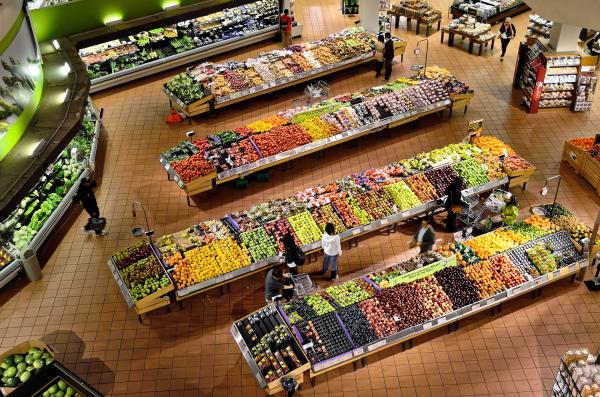“Stay out of the middle of the supermarket; shop on the perimeter of the store. Real food tends to be on the outer edge of the store….” Michael Pollan
Researchers and policymakers have tried everything to “improve” our food choices, taxes on sugary beverages, price reductions or subsidies for fruits and vegetables, and now, product placement in markets.
The study is a pilot, meaning it was designed to give researchers guidance on their research, not hard and fast statistical answers. It involved six UK supermarkets, over a year (pre-pandemic), in neighborhoods that were the most socio-economically deprived. (You have to love the English and their choice of words, we use lower socio-economic, their word choice is a bit more Dickensian.) Three stores acted as controls; the other 3, already scheduled for refurbishment, were laid out differently. Fruits and vegetables were given a more prominent place, the fresh ones near the entrance and the frozen ones in the first aisle. All unhealthy food [1], especially confectionery, was banished from those register-friendly sites to the back of the store. There were replaced with non-food items, gum, and water. In the three control stores, fruit and vegetables were relegated to the back, their frozen counterparts in mid-store, and those end caps filled with those nutritional bad boys.
“Women of childbearing age were targeted for this intervention because of their role as household food gatekeepers and their influence on the short-and long-term health of the next generation.”
The women were 18 to 45 and had supermarket “loyalty cards,” allowing the researchers to view their changing purchases. The participants were contacted through their loyalty card-related email accounts and asked to participate in a study of shopping and eating patterns. There received roughly three payments of $13.50 US; the total value based on a minimum living wage was 4 hours of work.
The participants were 91% white British, 54% unemployed, 59% with only a high-school education, with a median age of 36. 44% purchased most of their groceries from the control or interventional supermarkets.
- Fresh fruit and vegetable purchases increased in the interventional stores and persisted at six months. But the percentage change was low 1.7%
- Frozen fruit and vegetable purchases declined for both the interventions and controls and by roughly the same amount, 3 and 3.1%, respectively.
- Confectionery purchases were essentially the same for both groups. Product placement did matter to some degree because the women in the intervention group bought more of those non-food, gun, and water items, but only by about 0.6%
- On a serving basis, re-arranging the store resulted in purchasing six more “green salad vegetable” portions a week. [2]
- These altered purchases had no discernible effect on the women’s weekly spending. That should be no surprise given the tiny changes in the food purchase choices. From the supermarket’s point of view, there was “little impact” on store sales at the interventional or control sites.
Connecting the dots
Changing the supermarket's layout does exert a small impact on our fresh fruit and vegetable purchases and has no adverse effects on our pocketbook or store sales. The researchers note a “positive effect” but no “intervention effect” on confectionery purchases. All true, but with, to my mind, tiny changes that would most likely not translate into health benefits – the fundamental goal of nutritional eating.
The researchers came to a more decisive conclusion.
“This study therefore provides novel evidence to suggest that the intended UK government ban on prominent placement of unhealthy foods across retail outlets could be beneficial for population diet and that effects may be further enhanced if requirements for a produce section near supermarket entrances were incorporated into the regulation.”
We can all agree on the dots, the results of the study. Where I disagree is in how those dots are described. “… may be further enhanced” requires a modifier. For some, the 1.7% change, the extra cup of salad a week, will be worthwhile, especially since they will not bear the costs of a redesign. For others, including myself, it was more re-arranging the deck chairs on the Titanic. What do you think?
[1] The unhealthy included biscuits (cookies) and crisps (potato and corn chips) – you have to love their word choices!
[2] According to the American Heart Association, a serving is approximately one cup
Source: Altering product placement to create a healthier layout in supermarkets: Outcomes on store sales, customer purchasing, and diet in a prospective matched controlled cluster study PLOS Medicine DOI: 10.1371/journal.pmed.1003729




